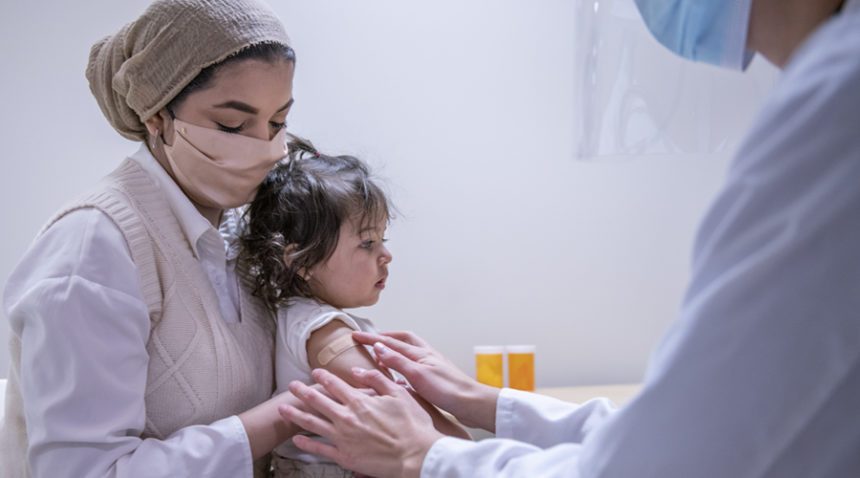Editor’s note: This article originally ran December 26, 2022, and was updated May 2, 2023.
After waiting the longest for access to COVID-19 vaccines, children under 5 have now been able to get shots for nearly a year. And the updated bivalent COVID-19 shot is available to them now, too.
Children who were vaccinated with the original formula are eligible for bivalent boosters, and those who were never vaccinated or only partially vaccinated will receive the bivalent shot for the primary series now. The original formula (monovalent vaccine) is no longer available because the bivalent shot is more targeted to the virus circulating now.
We talked to UNC Health pediatric infectious diseases specialist Peyton Thompson, MD, MSCR, about what parents of children younger than 5 need to know. Here are three facts we learned.
1. Young children can generally get the bivalent booster two months after their last shot.
If your child received the Moderna primary series, made up of two shots, they are eligible for a Moderna bivalent booster two months after finishing the primary series.
If your child received three shots of the Pfizer initial series, they should get a bivalent booster eight weeks or more after their third shot.
Children who received no initial shots or only some of the series may need between one and three doses of the bivalent shot, depending on their age and the number and type of shots they received previously. Your pediatrician can guide you on the specifics.
If your child is immunocompromised, they may be eligible for additional doses. Again, talk with your child’s doctor to find out what timing is best for them.
2. Side effects of all COVID-19 shots are minor and temporary.
Side effects from the bivalent booster are minor and similar to other vaccines. They may include irritability and crying in the youngest children (under age 3) and feeling tired in slightly older children.
“The side effects are the same across all age groups. The main side effects are swelling and redness at the site of injection,” Dr. Thompson says. “Then feeling tired, and muscle or body aches. Fever is less common. These are side effects we would expect with any of our routine childhood vaccines.”
There is no need to pre-medicate before your child gets the vaccine, but it is fine to give acetaminophen (Tylenol) or ibuprofen (Advil, Motrin) after vaccination for aches or fever, Dr. Thompson says.
3. Vaccines are the best protection against severe illness from COVID-19 and the flu.
Once the pandemic waned and people were out and about again, several viruses surged after having been somewhat inactive. Families have had to deal with RSV, or respiratory syncytial virus, the flu, COVID-19 and strep throat.
Most kids recover with home treatment, but even healthy children can be hospitalized with one of these infections.
“You can get multiple viruses at once, which is really tough on these little babies and their immature immune systems,” Dr. Thompson says. “That’s why it’s important to get vaccinated—to protect these babies from what we can protect them against.”
If your child is eligible for a flu shot and a COVID-19 vaccine or booster, get them. It’s safe to get them at the same time, Dr. Thompson says. There is not yet a vaccine for RSV, but receiving the other vaccines can reduce the potential impact of viruses on your child’s respiratory system.
“Studies continue to support the fact that vaccines prevent severe illness, hospitalization and death, and that’s what we care about. We know you can still get flu despite flu vaccination, but you don’t get the severe cases that land you in the hospital. And that’s the same we’re seeing with COVID,” Dr. Thompson says.
“Even though we don’t see 100 percent efficacy of these vaccines, some protection is definitely better than none.”
To find out where to get the COVID-19 or flu vaccines for this age group, visit http://www.vaccines.gov/ or talk to your doctor. Need a doctor? Find one near you.

